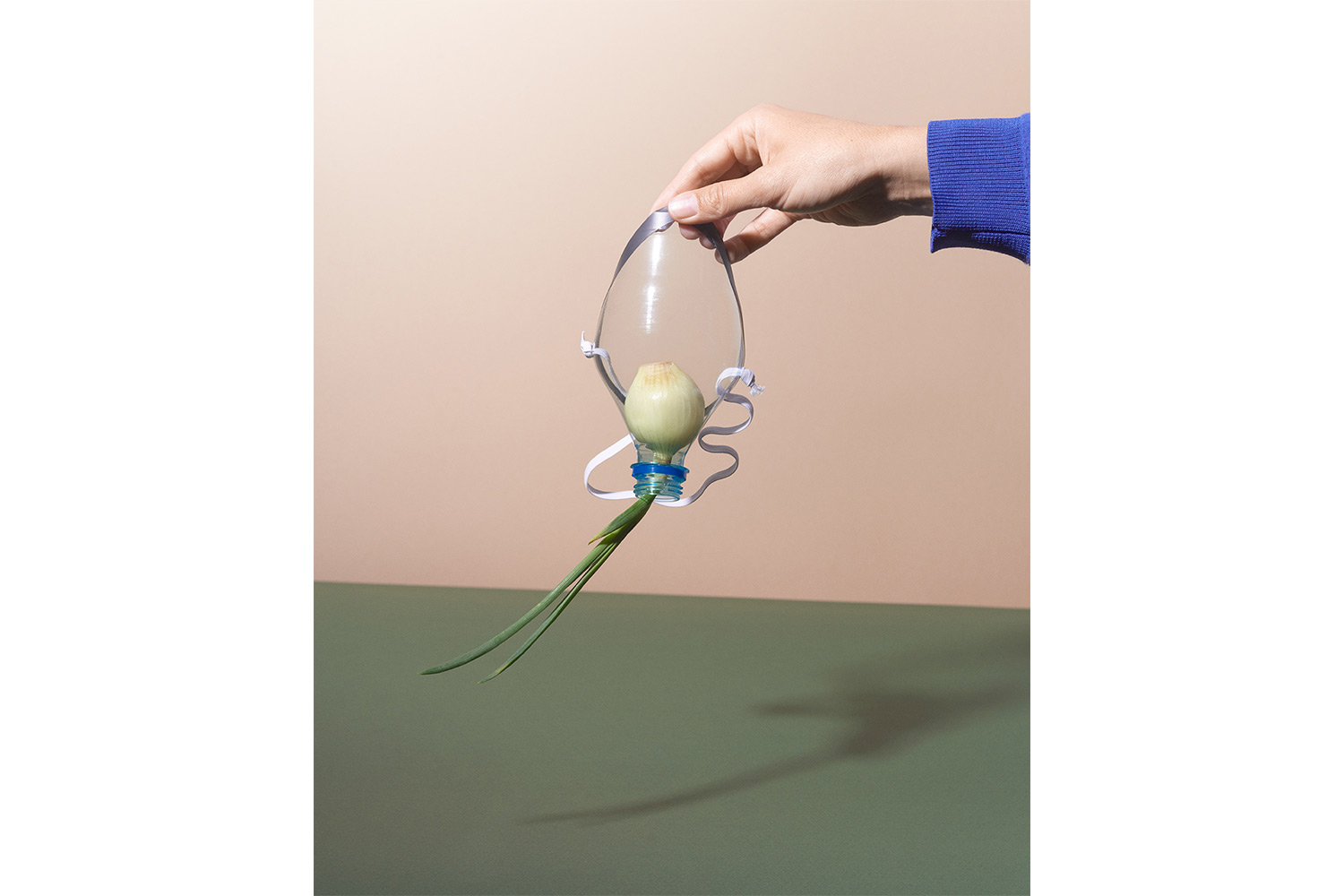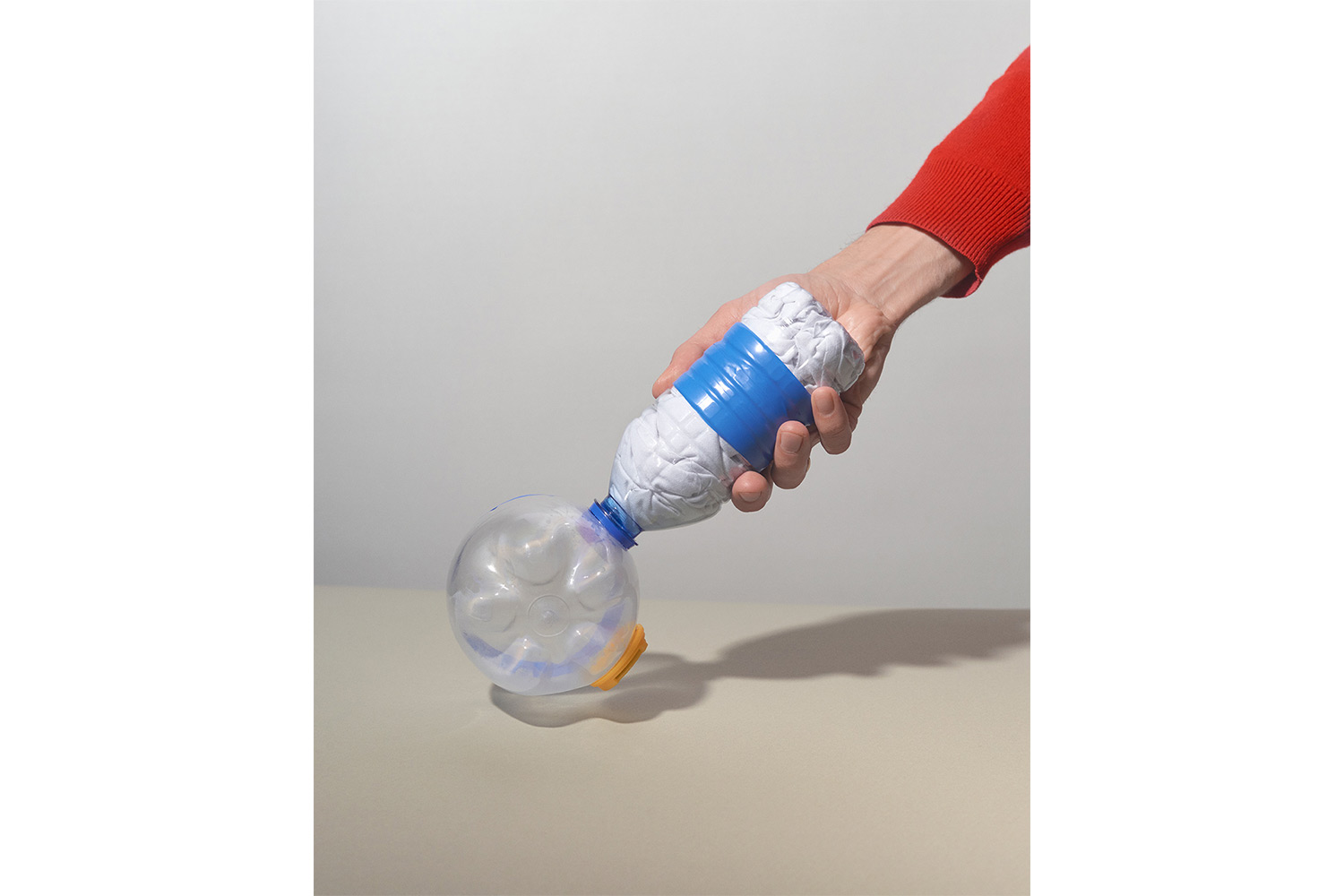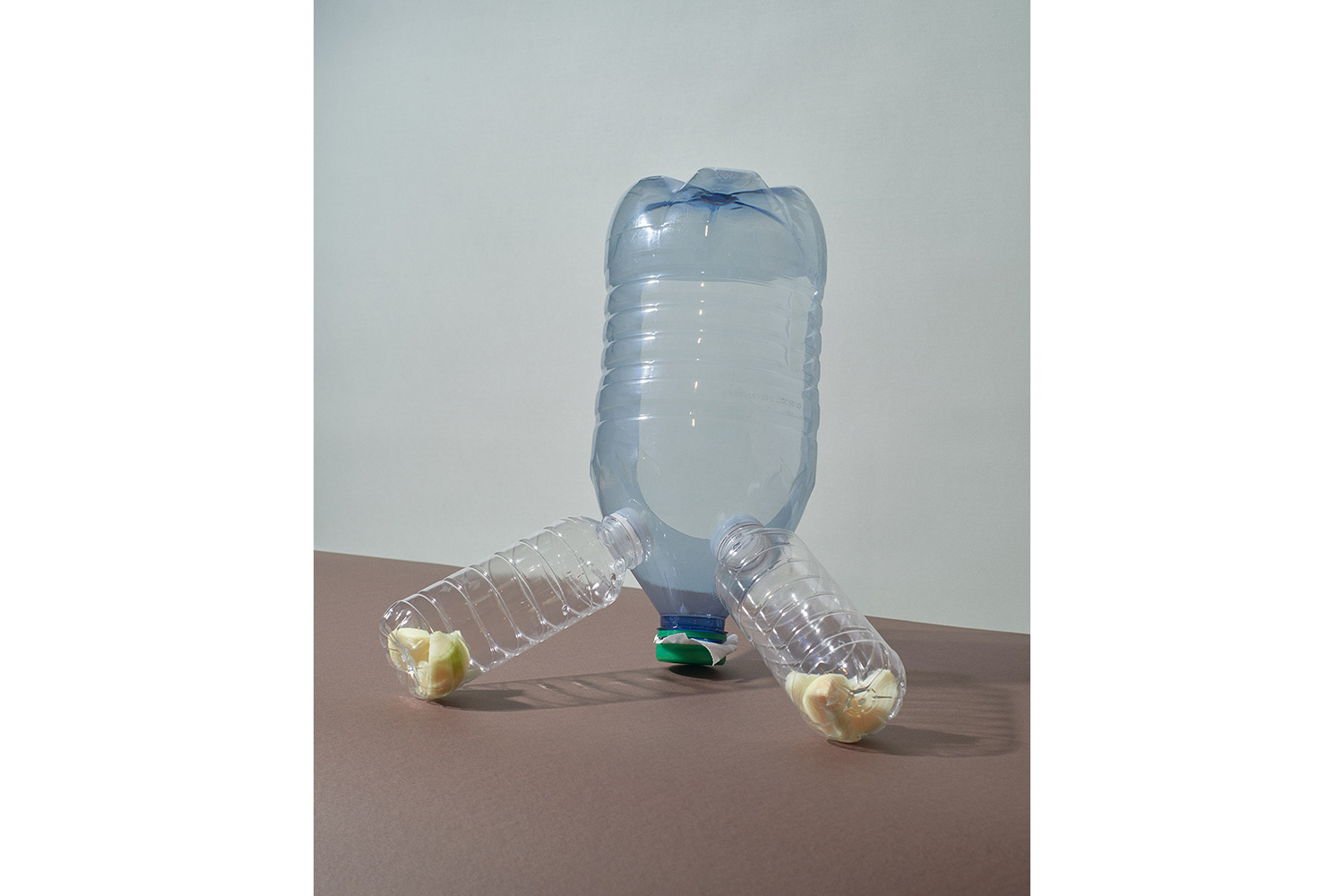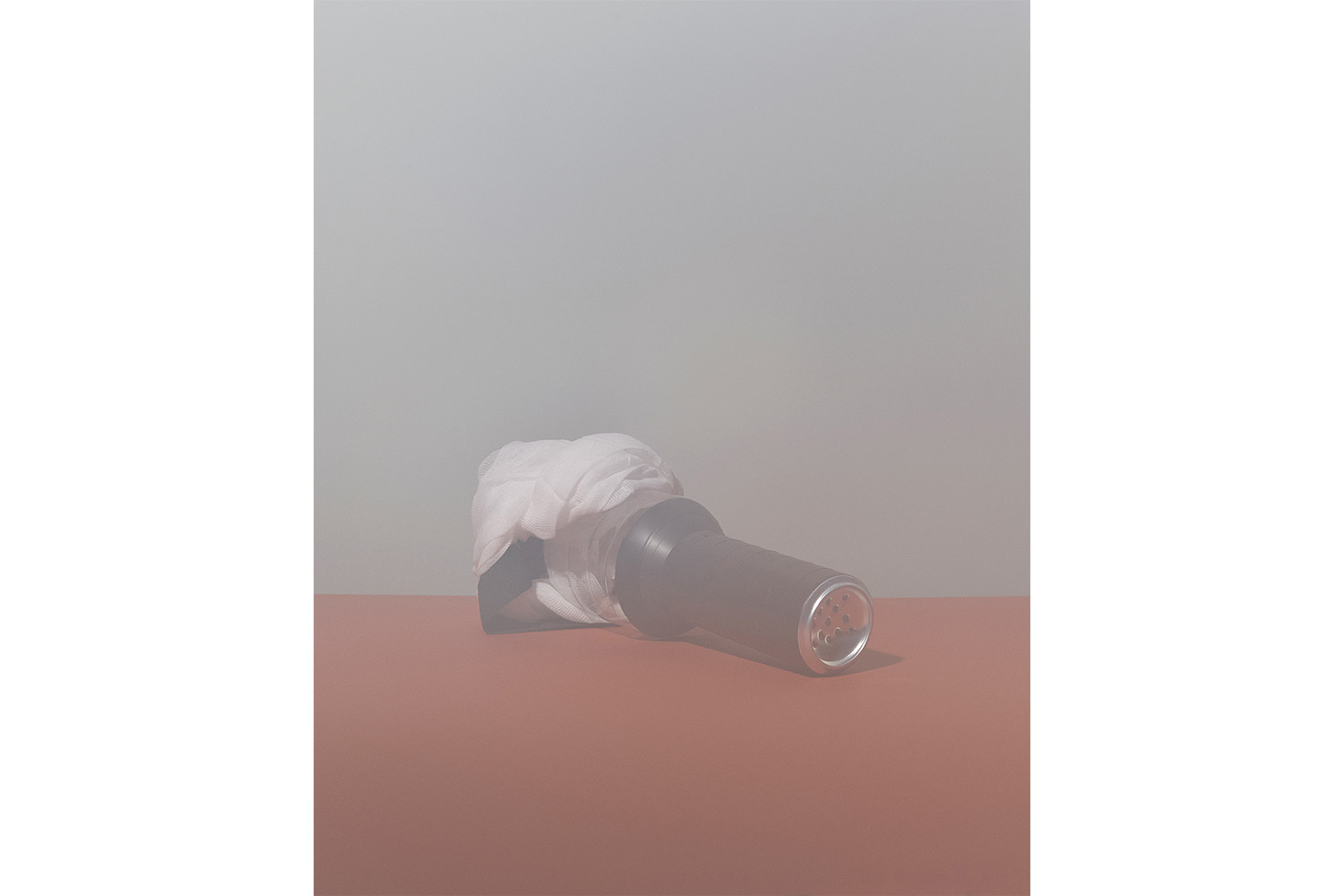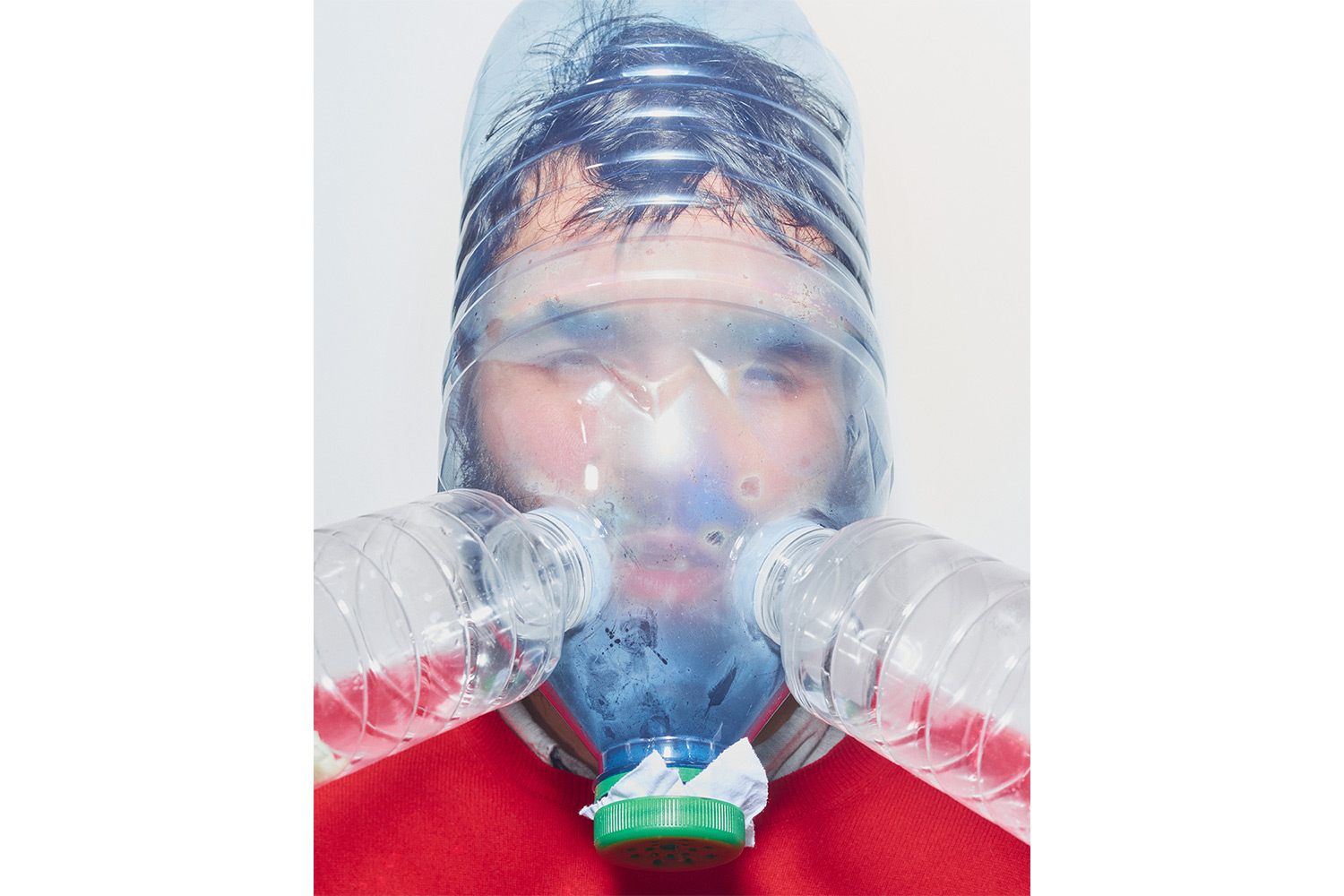Every day, tear gas canisters are fired somewhere in the world. But while in the Global North activists may be exposed to gas during demonstrations, it is not an integral part of their everyday life. In contrast, in places like the Palestinian refugee camps in the West Bank, gas grenades are fired several times a week, and in some months, daily. So the residents had to adapt to its horrid, noxious presence. The first line of defence against the gas is to wear a breathing mask. Protesters usually do not have access to the right equipment and are forced to make their own gas masks from materials available to them – plastic water bottles, soda cans, old T-shirts. This is a grassroots, consistent upcycling against toxicity of the state and systemic oppression. Now that police brutality and gas abuse are on the rise, we can learn from those who have been resisting for years.
1. Replica of the mask of a Palestinian boy from Gaza, 2018.
2. Replica of a mask from protests in Myanmar, 2021.
3. Replica of a mask from protests in Venezuela, 2017.
4. Replica of a mask made by a Palestinian boy in Gaza, 2019.
5. Replica of a mask from Venezuela, 2017.
comissioned by
Political Critique, Jasna 10, Warsaw
collaboration
curator: Wojtek Zrałek-Kossakowski
production: Kuba Rudziński
illustrations: Marcin Kubiak
photos: Grzegorz Wełnicki / RATS Agency
objects
7 masks: plastic bottles, cans, activated charcoal, onions, insulation tape, cotton, rubber band
video tutorial / illustrated instruction
